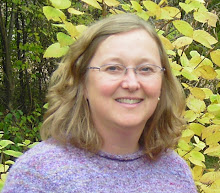The overall Dane County budget is approximately $525 million,
of which more than half is dedicated to human services needs and another
quarter dedicated to public safety needs.
The budget also includes provisions that give the county a strong
reserve fund of approximately $12 million should another economic downturn
occur.
With respect to the Human
Services programs, the county board approved a number of initiatives
directed at the homeless, including funding for a temporary winter daytime shelter
for the winter of 2012-13 and funding for a permanent daytime shelter for the
fall of 2013. In addition, the budget
includes funding towards Single Room Occupancy (SRO) housing as a permanent
solution to homelessness and funding to keep homeless youth off the streets, replacing
federal grant dollars that ceased.
The county budget also includes funding for our youth in the
form of an Early Childhood Intervention (ECI) program with expansion to Sun
Prairie, funding to help expand the “Birth to four year old kindergarten” to
Leopold School (South Madison / Fitchburg), three additional child protective
services positions and a new juvenile delinquency social worker.
Recognizing and honoring our veterans was also a priority for the county board, and to that the
budget increases emergency aid to address homelessness, provides access to bus passes and improves
access to services by streamlining access to benefits and updating technology. We
also included funding for the DAIS housing vouchers for those fleeing domestic
violence and reduced the waitlist for developmental disabilities support . Locally, we were able to help the East
Madison and Monona Coalition for the Aging so they can continue their valuable
service to our community.
To support our public
safety mission, we added funding for four additional drug court slots and expanded
it to ensure racial diversity within drug court, we expanded the restorative
justice programs to 3 middle schools to keep youth out of criminal justice
system, expanded the Alcohol and Other Drug Additions (AODA) programs and
updated the Sheriff’s Departments squad car video cameras.
Other economic and community
program support came in the form of funding for Partners for Recreation and
Conservation (PARC) grants for municipalities and organizations to improve
infrastructure and public spaces for recreation, funding for BUILD grants which help
communities and businesses by fostering job and economic development and are supporting municipalities throughout
the county by providing matching funds for new voter machines throughout the
county.
As a member of the Alliant
Energy Center Commission, the Task force for the Expansion of the Aliant
Energy Center and as Chair of the Public Works Committee, I am very proud of
the support this budget brings to enhance the Alliant Energy Center and move it
forward as an economic driver for the area.
To that end, the budget includes funding that will be combined with State
and other private partner funding for an expanded animal barn, and funding for improvements
to the Coliseum to allow for more intimate concert venues. Lastly, the budget includes funding (along
with funding from the City of Madison and the Greater Madison Visitor and
Convention Bureau) to conduct a “visioning” for the future of the AEC.
Lastly, the County budget maintains critical funding for continued
environmental improvements, such as
efforts to remove carp as part of the County Board’s “Clear Lakes” initiative,
adds funding to expand the county fleet that is fueled from Compressed Natural
Gas (CNG) generated at our landfill, provides funding for county programs to
become more sustainable.
I’m proud of the balance that this budget brings and the
priorities that are maintained in the County.
